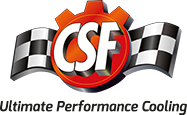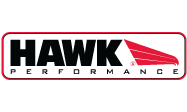Photography by Emotive Image
His name is Alex Wong, but you might know him better around the internet as Emotive Image. He’s a 34-year-old photographer who hails from San Francisco, and in my opinion he’s one of the most talented people capturing motorsports images today. He started taking photos in 2004 after his parents enrolled him in an art class in San Francisco’s Chinatown, and remembers being frustrated that paintings and art pieces would take days or weeks to finish. Then, he took a photo for the first time, and the ability to develop the image in an hour made him fall in love with the immediacy of the art form. In 2012, Wong left his nine-to-five and jumped into photography full-time, branding his company as Emotive Image, and changing his life forever. In the time since, he has worked for highly-esteemed clientele including BMW, ESPN, Hot Rod Magazine, Nitto Tire, the Golden State Warriors, and Lamborghini USA. He even captured breathtaking moments in a unique fashion for two-time IndyCar Champion Josef Newgarden throughout his championship-winning 2019 season.
Of the events I’ve photographed with him, I can always count on finding him in a unique shooting location perched away from the rest of the media crowd. Once the event is over, I just sit and wait for his interesting photographic perspective to surface online and make me question why I position myself where I do. It’s his unique take on shooting the same material that has pushed me to think further outside the box in my own work.
Today’s article focuses on imagery he captured at the 2019 Formula 1 Emirates United States Grand Prix—a race he has photographed before, at a location where he has worked previously. If you recall earlier this year, we ran coverage of the F1 testing sessions in Barcelona, Spain, and the season-opening race weekend in Melbourne, Australia. In the latter of the two, Wong’s brilliant photographic eye helped us tell the story of the weekend. This time I had a different thought. In a departure from our normal coverage, I wanted to let Alex discuss the perils of shooting such an event. So, what’s it like to photograph a Formula 1 weekend? Well, I’ll let Mr. Emotive Image tell you himself.




Front Street Media: Alex, I’ve seen you drawing out a template—like a storyboard—before shooting single feature images. Before the Grand Prix race weekend ever happens, what do you do behind the scenes to prepare?
Alex Wong/Emotive Image: I would love to be able to draw out a storyboard for a Grand Prix weekend, but we’re very limited on what we can accomplish. Usually, on Thursday, after the press conference has finished, we walk the entire circuit. There isn’t much activity at the track, so we can carefully pick and choose our preferred photo locations in relation to the time of the sessions. We can come away with a decent plan for the next few days of shooting, but we rarely ever stick to it. Sometimes we’ll be leaving the circuit and find a new vantage point or new inspiration and scrap our entire photo plan.




FSM: Did you prepare any differently for this particular weekend at the United States GP with Lewis Hamilton’s potential championship in the works?
AW: This weekend, my main client was a German press agency that follows the entire Formula 1 race calendar. Since there was the possibility of Lewis winning the championship, photos of the championship celebration were at the top of the list. So I knew when the checkered flag dropped on Sunday, we would be on a crunch to get photos of the championship celebration and deliver them immediately. In addition to the championship, I would need to capture Lewis, [Sebastian] Vettel, [Valtteri] Bottas, and others in the championship fight in case things wouldn’t pan out. On-track photos weren’t a priority as much as portraits and candids of the drivers.




FSM: When I see you at Formula Drift, you’re quite comfortable and confident. Do you ever get nervous and unsure when you’re shooting larger events like F1 or IndyCar?
AW: Ha! I am always nervous and unsure, regardless of the event. In Formula Drift, I am a bit more comfortable as the amount of access I have to the drivers, the cars, and teams is incredible. It makes my job a lot easier when I have a rapport with a driver or team and capture the photos I need without much of a headache. At IndyCar or Formula 1 events, my access is far more limited. I rarely get access to the pitlane, so if/when I do, I have to plan my shoot schedule around that particular session. Drivers are almost impossible to find, and you have to plan where to stand (in front of the garage, in front of hospitality, etc.) to get a simple photo. It is a lot more of a hurry-up-and-wait situation, which adds to the amount of anxiety throughout the weekend.



FSM: How do you battle the size of the 3.4-mile Circuit of the Americas track with the reasonably short time period of on-track sessions of Formula 1?
AW: Fortunately, the Circuit of the Americas provides us with media shuttles throughout the track, so we don’t have to hike as much. With that being said, they are few and far between. You have to be on your way to your shoot location as much as 30 minutes before the start. From there, it’s all about efficiency: shoot as many angles and corners as possible within the short session, and hopefully, when the session is finished, the media shuttle won’t be jam-packed and can get you back to the media center as quickly as possible.


FSM: When the practice sessions started for the weekend, what were the most important aspects you were looking to cover?
AW: It depends on the session themselves. In the first session, many of the cars have aero paint or aero sensors attached, and clients tend not to use these photos. Also, many of the higher teams will wait until the track warms and grips up and will not send their cars until far later in the session. You plan accordingly, and just like the drivers, I’ll choose a simple corner to warm up. From there, we’ll move to locations with photos we want to try our new techniques, etc. Be efficient and accurate but also push the boundaries of what you’re capable of. All within the hour or an hour and a half.


FSM: How does the lighting impact where you choose to shoot?
AW: Honestly, more than I wish it did. We’ll definitely plan our shoot locations in relation to light and where the sun sits, and shadows are cast. But more often than not, we’ll get it wrong and will have to make do with whatever lighting we are given. I’ll often have a scene in my head, and when I arrive at the location, it looks completely different. At that point, we are running against the clock and will shoot even if the photos aren’t what we wanted.



FSM: Because most cars are only out for a total of three laps at a time, what is your plan of attack for qualifying?
AW: Qualifying is a different beast. It depends on the circuit and what you are trying to accomplish. In Melbourne, Australia, I knew the top qualifier wouldn’t be as important as the race winner. So I made the trek to a portion of the track I knew cars would spark and be on their absolute qualifying limit. At the US Grand Prix, however, the pole position was of great importance as the championship battle was going down to the line. I chose to shoot qualifying from corners as close as possible to the pitlane in order to get photos of the top three qualifying drivers. We pick our battles, sometimes if the light is just that good, we’ll sacrifice one location for another.




FSM: You always have fantastic images of the drivers on the front straight before a race starts. Still, I know the media pits at certain corners have to get crowded very quickly. How early do you have to get into position at turn one before the race starts?
AW: Fortunately, almost every photographer in the Formula 1 media scrum is very respectful and understands how tight we run up against the clock. There are pre-assigned locations on the turn one photo location. I’ve been fortunate enough to become friends with many of the series’ long photographers, and they are always gracious to give me just enough space to capture the start shot. Even if I arrive with 30 seconds to go.



FSM: How crowded are the designated media shooting locations? Also, compared to something like Formula Drift, how many more media personnel would you say are present at Formula 1 races?
AW: With the exception of the turn one start photo, media locations are rarely overwhelmed with photographers. That being said, I’ve only photographed Formula 1 in massive venues where photographers are spread out miles apart. In the media center, there are easily 150-200 photographers during a race weekend, sometimes even more. On top of this, there are the deadline media journalists and live broadcast teams. It really is a circus. In direct comparison to Formula Drift, I feel the intensity and immediacy are the biggest differences. Whether it is photos, video, written, the content needs to be up yesterday, and it’s very apparent with the number of people on hand to make it happen.


FSM: What are you looking for when you set up for race shots? Do you already know you want to blur this or freeze that, or do you mix it up depending on what you’re able to get?
AW: I’ve asked many Formula 1 photographers this, and the consensus is the second-go for a new circuit proves to be the best. The first time at a circuit, you’re running with your head cut off, trying to find the iconic photo locations, the safe photo locations, etc. The second time around, you know where, and more importantly, where NOT to go. The trick is trying not to get stuck in a routine, and constantly evolve—constantly push yourself. We are plenty capable of capturing the safe photos our clients need, the trick is to take it to the next level every time.



FSM: How many hours would you say you spend at the track over a race weekend?
AW: More than I would like. Although I’ve made many friends within the media circus, so staying late in the media center becomes more of a group bonding session. It’s enjoyable.



FSM: What’s the real trick to keeping it all together during a high-pressure race weekend?
AW: Coffee. Most media centers have coffee available, but they run out quick. Stay on top of the caffeine, and you are golden.



We’d like to thank Alex for his stellar insight into what it takes to photograph a full race weekend at this level. Stay tuned to our website over the next couple of weeks—Alex will be sharing his perception of what it takes to capture the insanity that is the Baja 1000, too!









